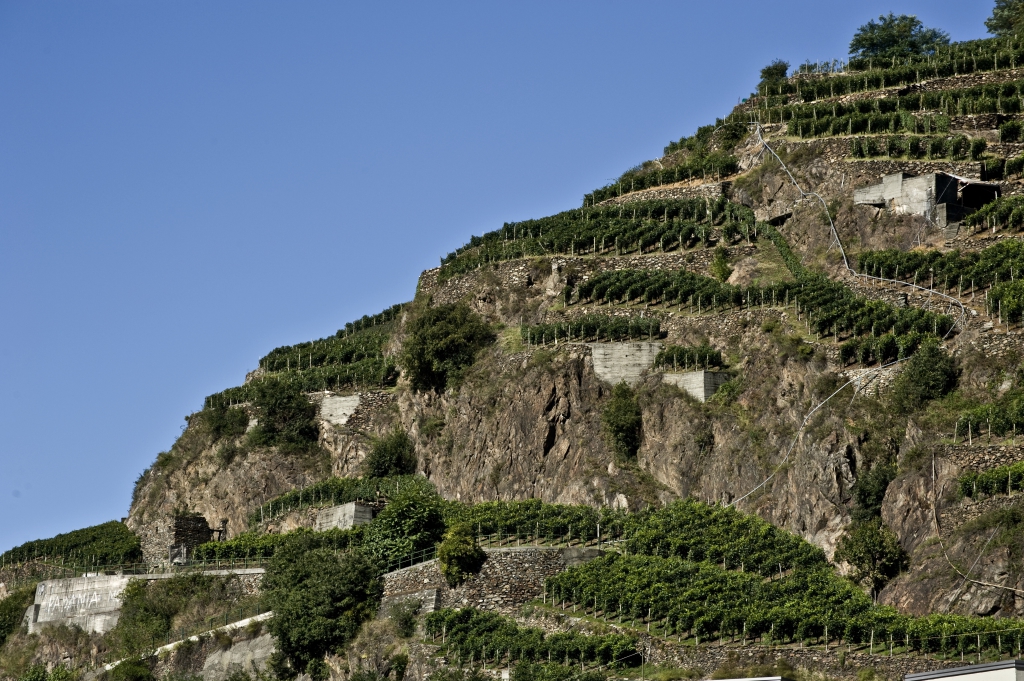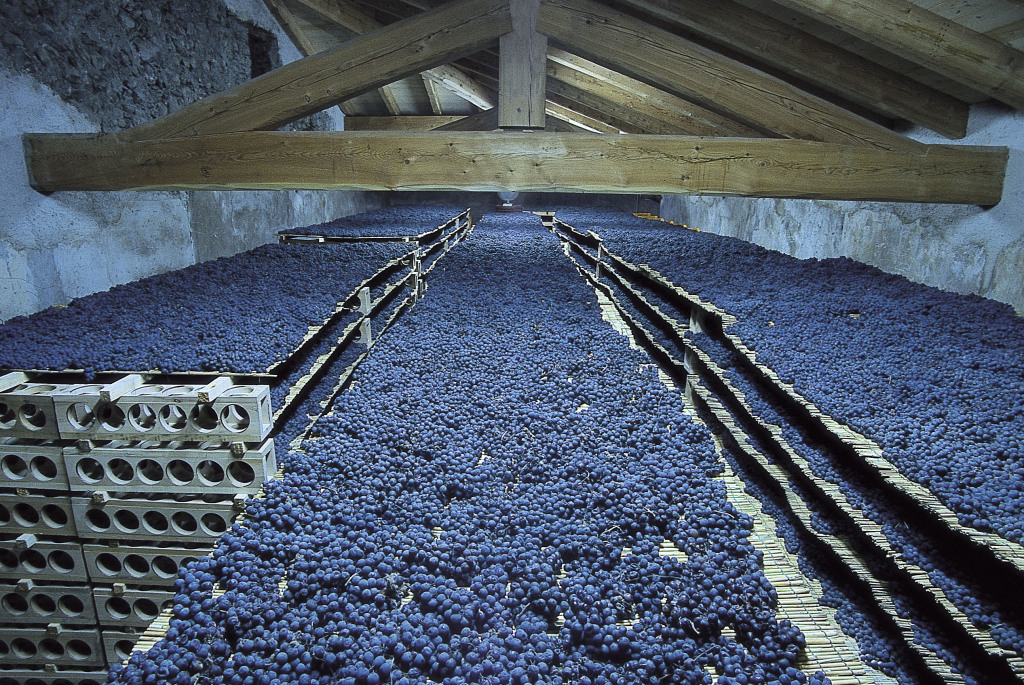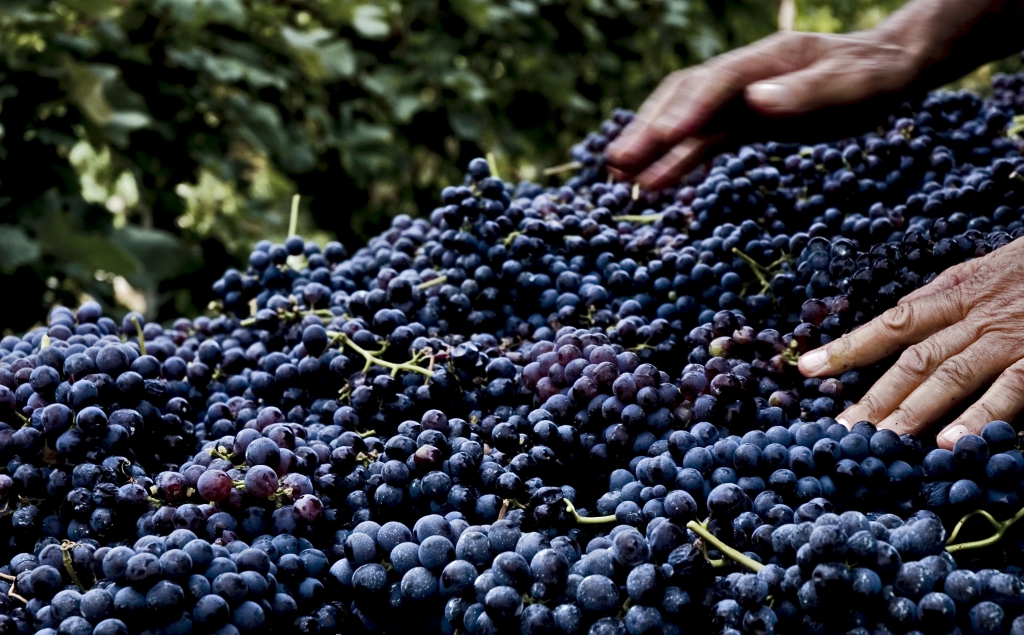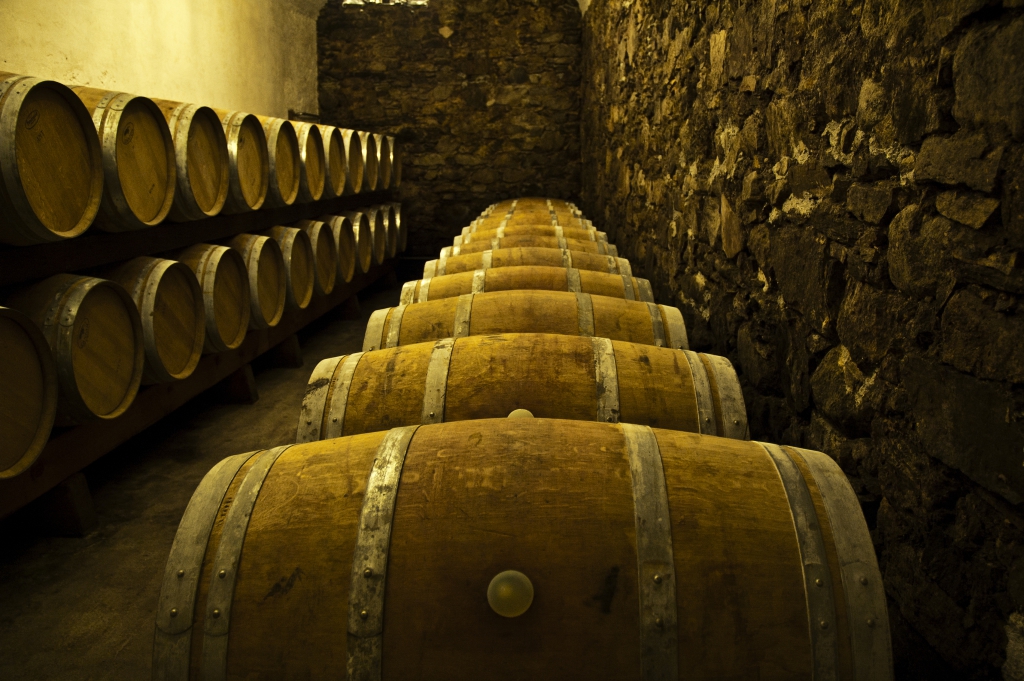Today the wine of Valtellina is a symbol, abroad too, of one of the most beautiful lands of Italy characterized by vertical wine growing, and a heritage of a century made of traditions, protected by the Consortium. The wine of Valtellina is a result of man’s work and labour. With industriousness and wisdom, the inhabitants of this land related themselves in a positive way to a hostile mountain environment, realizing a cultivated area which is still, and will be for the future too, an evidence of productive ability, love for nature, and landscape development.
Valtellina, which alongside with Valchiavenna represents the land in the province of Sondrio, is located above the Lake of Como, in a considerably northern position, and is apparently unpropitious to vine. Some special environmental conditions, however, foster a climate suitable for viticulture, especially as for ‘Nebbiolo’ vine, a late-ripening variety which over the centuries has been able to create a perfect union with this earth, so producing unique wines.
The area assigned to vineyards is situated between the municipalities of Morbegno and Tirano, for a coastline of about 60 km. In this land, which extends for about 1.200 acres of vineyards, the following Denominations of Origin are present: the DOCG (Controlled and Guaranteed Denomination of Origin) ‘Valtellina Superiore’ and ‘Sforzato di Valtellina ‘; the DOC (Guarantee of Origin) ‘Rosso di Valtellina’ or ‘Valtellina Rosso’; the IGT (Typical Geographic Indication) ‘Terrazze Retiche di Sondrio’.
Terraced vineyards
Because of the difficult orographic situation of this land, the cultivation is carried out in terraced plots characterized by reduced dimension, supported by dry stone walls that create an extraordinary landscape effect. The stone walls that surround the terraces are surprisingly long, with a linear development consisting in more than 2.500 km.
Taking care of these structures is especially expensive, and this difficulty comes on top of the technical and environmental factors that characterize all the mountain agricultures.
‘Nebbiolo’ grape, which here is called ‘Chiavennasca’, is the prevailing quality of the grape of Valtellina . The minor vines of Valtellina, ‘Rossola’, ‘Pignola’, ‘Prugnola’, and many other ones, come alongside.
Wines of Valtellina
DOCG Sforzato di Valtellina
‘Sforzato’ di Valtellina is the first dry red sweet Italian wine which was awarded DOCG, obtained in 2003 after a complex process to which all producers took part together with the Consortium.
It is the result of the selection of the best Nebbiolo grapes, perfectly sound and intact, that immediately after being harvested are placed on racks for about three months in dry and well-ventilated rooms called ‘fruit cellars’. After drying, the grapes lose 40% of their weight, their juices are concentrated, develop special aromatic fragrances and are ready for pressing.
20 months of ripening and ageing in wood and bottle follow, and only then this red wine with a minimum alcohol content of 14% is ready for tasting. Its colour is dark garnet red and is characterized by intense scents.
Vine: Nebbiolo (min. 90%) and other varieties suitable for cultivation in the Lombardy Region (10%)
Suggested combinations: it is excellent as a sipping wine, but is suitable with Alpine cheeses and savoury meats, too
DOCG Valtellina Superiore
It refers to the vineyards of the area between Berbenno and Tirano, with a maximum output of 8 tons/hectare. The minimum alcohol content of this wine ready for tasting is 12%, with a minimum ageing time of 24 months, at least 12 of which in oak barrels. In particular years, after a 36 month ageing the qualification ‘reserve’ is allowed.
DOCG Valtellina Superiore can also have the names of five sub-areas of production:
Maroggia: this is the area which was awarded the most recent acknowledgement (2002). It is located in the municipality of Berbenno Valtellina. This wine is produced in limited quantities (25 hectares only are designed for vineyards) and is linked to Benigno De’ Medici, who in the mid-fifteenth Century stood at Maroggia, where he found hospitality and refreshment, appreciating in particular the local wine, whom he called ‘firmum et dulce’ , that is full-bodied and sweet. Its colour is ruby with garnet reflections and is characterized by ethereal scent, and dry, harmonious, velvety, and rightly tannic flavour.
Vine: Nebbiolo (min. 90%) and other varieties suitable for cultivation in the Lombardy Region (10%)
Suggested combinations: red meats and game, savoury charcuterie, and aged cheeses.
Sassella: this is the historic and perhaps the most famous sub-area of Valtellina Superiore. It originates in the west of Sondrio, from Castione Andevenno as far as the chief town, in an impervious and sunny area. Its name probably derives from the little church with the same name, which comes from ‘rock’ (in Italian, ‘sasso’), ‘cliff’. Its colour is ruby, tending to garnet. Its scent is intense and persisting, and is enhanced with ageing. Its taste is dry, austere, harmonious, and lightly tannic.
Vine: Nebbiolo (min. 90%) and a maximum of 10 % of other grape varieties suitable for cultivation in the Lombardy Region.
Suggested combinations: red meats, game, savoury charcuterie, and aged cheeses
Grumello: it is produced in the north east of Sondrio (with a vineyard of 78 hectares) and its name comes from the Grumello Castle, which has overlooked this valley since thirteenth Century. Its colour is ruby tending to garnet. Its scent is subtle, intense and characteristic, which refines with ageing. Its flavour is dry, austere, harmonious, and velvety. As it happens for all ‘Valtellina Superiore’ wines, it is suitable for long term storage.
Vine: Nebbiolo (min. 90%) and other vines suitable for cultivation in the Lombardy Region (10%)
Suggested combinations: red meats, game, savoury charcuterie, and aged cheeses
Inferno: this subzone, whose name is as unique as fascinating, probably originates from harshness of the small terraced vineyards, located between Poggiridenti and Tresivio, and the very high temperatures that are reached during the summer. Inferno (in English ‘Hell’) is the smallest sub-denomination, located just east of Grumello. Its area assigned to vines consists in 55 hectares. The grapes produced in this area give a wine of character, suitable for long ageing, with a ruby colour tending to garnet. With refinement it acquires special fragrances and softens. Its flavour is dry, harmonious, and lightly tannic. It is considered as the most austere of the ‘Valtellina Superiore’ wines.
Vine: Nebbiolo (min. 90%) and other varieties suitable for cultivation in the Lombardy Region (10%)
Suggested combinations: typical dishes of Valtellina, polenta, game, and aged cheeses
Valgella: it is the largest of the sub-areas of ‘Superiore’ (with an extension of 137 hectares), located in the municipalities of Chiuro and Teglio, northeast of Sondrio. In the past, this red wine was mainly assigned to export in the neighbouring Switzerland. Its name comes from the Latin vallicula, that is small valley. Its colour is ruby tending to garnet and it distinguishes itself for its wider initial smoothness, which does not exclude the same resistance to ageing. Its aroma is ethereal and delicate. Its flavour is dry, harmonious, soft, and round. Fresh floral sensations make it appreciable when ‘young’, too.
Vine: Nebbiolo (min. 90%) and other varieties suitable for cultivation in the Lombardy Region (10%)
Suggested combinations: ‘pizzocheri’, dishes of meat, bresaola, goat violin and savoury cheeses
DOC Rosso di Valtellina
DOC Rosso di Valtellina confirms the same basis of DOCG vines. The maximum yield in vineyard consists in 10 tons / hectare. Wine yield: 70%. It does not refer to sub-areas and is a dry red wine, with 7 month ageing, and a minimum alcohol content of 11%. It is possible to notice some different shades in scents, colour, and flavour, because it can be produced in different areas with distinct characteristics. It can be characterized by a medium body and intended for consumption in the year following the harvest, or may have a more important character with an excellent structure, which allows ageing for several years. Its colour is bright red when ‘young’, and after ageing it acquires garnet reflections. Its scent is subtle and persisting. Its taste is dry and lightly tannic.
Vine: Nebbiolo (min. 90%) and other varieties suitable for cultivation in the Lombardy Region (10%)
Suggested combinations: it is a wine for the whole meal
IGT Terrazze Retiche di Sondrio
This IGT allows the production of red, rosé, white, sparkling, dry, and newly-produced wines. The list of allowed vine varieties includes the ones suitable for cultivation in the Province of Sondrio. White wines, obtained thanks either to grapes of the same colour or black grapes vinified in white, and sparkling wines, produced according to the classical method, meet a growing success. The recent amendment of the Regulations has also introduced two new types: ‘sweet’ and ‘late harvest’. There is also the ‘young’ type. The combinations are obviously variable; reds wines are generally fresher and fruitier in comparison with D.O. Valtellina wines and can be considered as wines for the whole meal.
*Ermanno Olmi, a great master of Italian cinema, has realized the documentary film ‘Rupi del Vino’ (Cliffs of Wine), which focuses on the Valtellina valley, its vineyards, its wines, and all the heroic actions which have been done in this land during the centuries.






